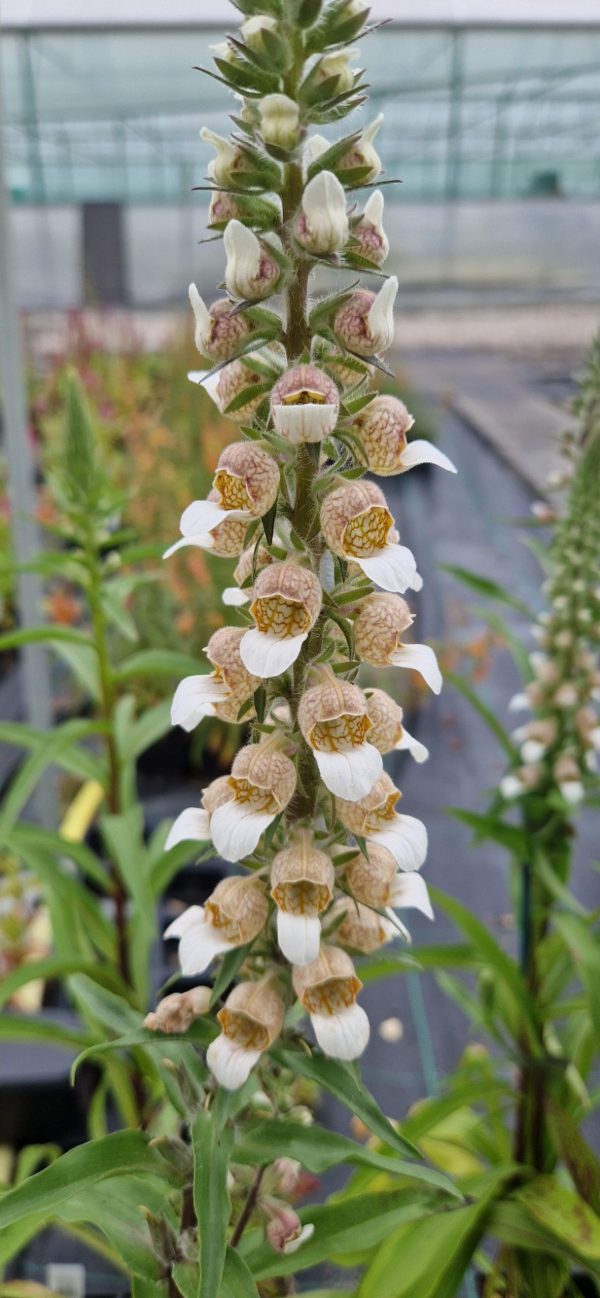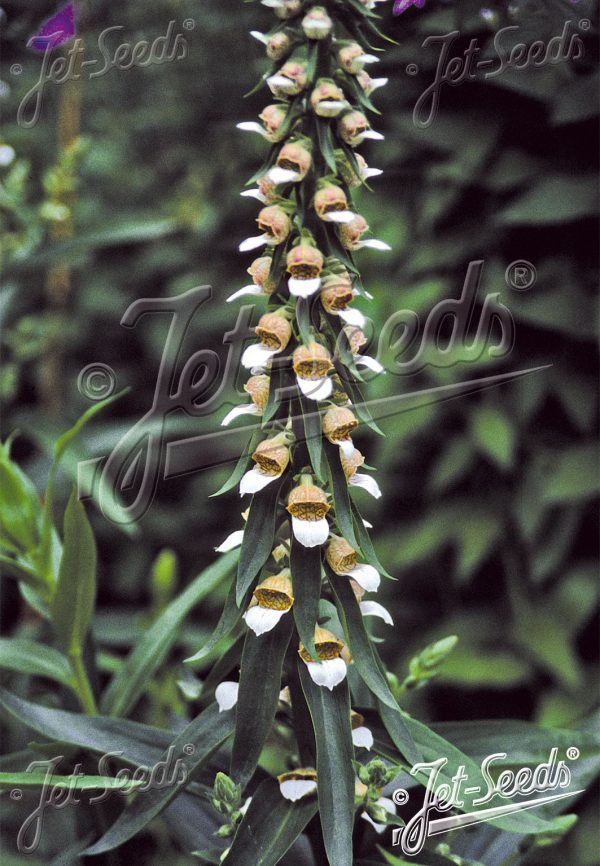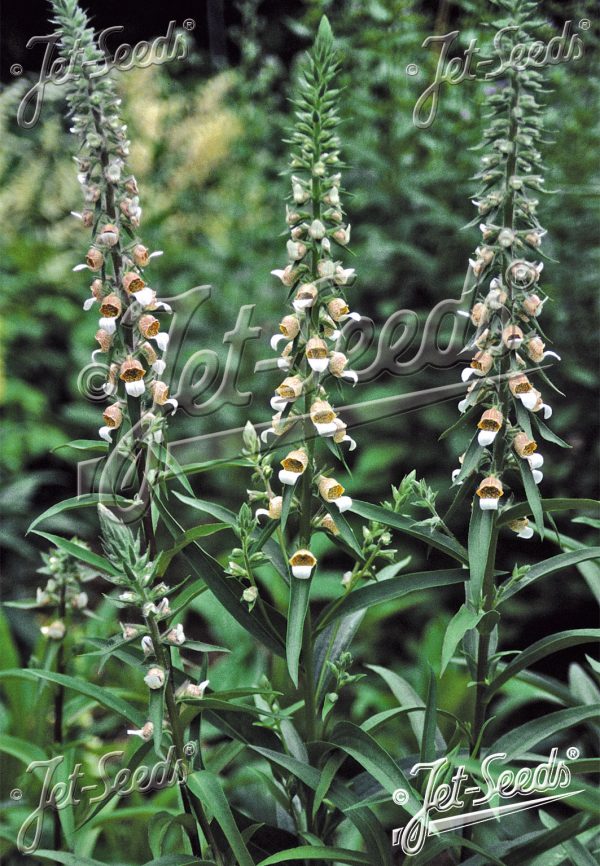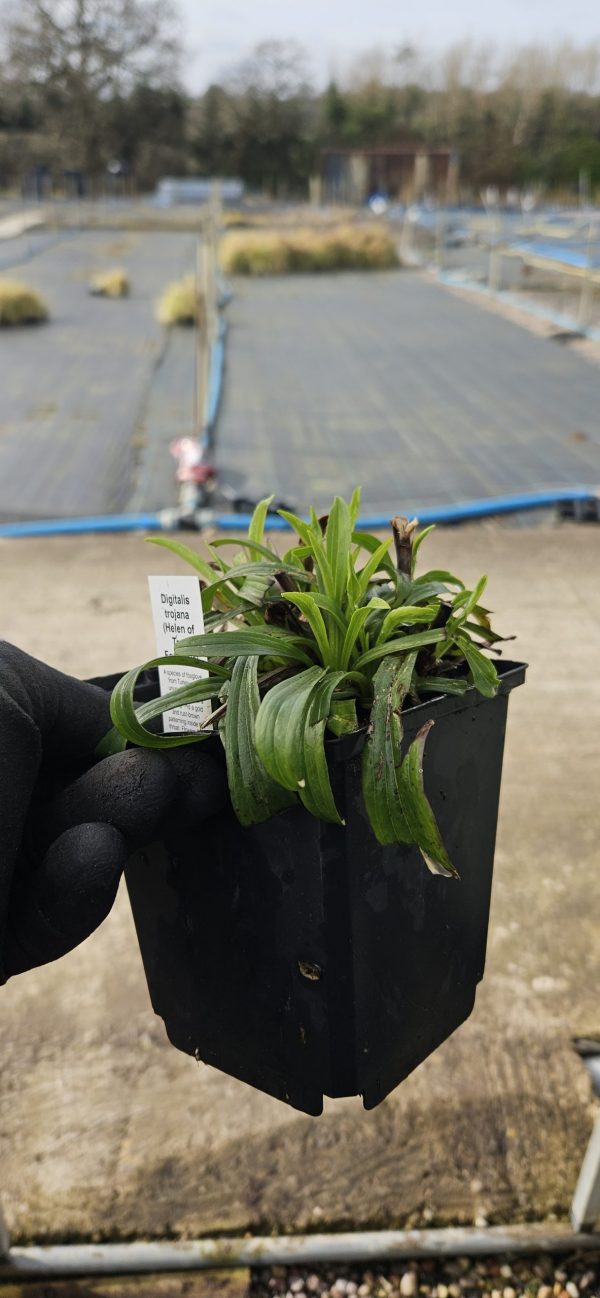PLEASE NOTE: YOUR PLANT MAY BE SUPPLIED CUT BACK
Digitalis trojana (Helen of Troy foxglove)
£6.45
A species of foxglove from Turkey with unusual caramel-brown flowers with a white lip and a gold and rust-brown patterning inside the throat. Flowers from late spring to early summer. Height 1m. Spread 50cm. Full sun/partial shade. Well-drained soil. Hardy. Attracts bees.
Description
Digitalis trojana is a unique species of foxglove native to Turkey, admired for its unusual caramel-brown blooms with white lips and golden throat markings. Flowering from late spring to early summer, this striking perennial brings an exotic twist to borders and attracts bees, adding both colour and wildlife value to your garden.
PLANTING and AFTERCARE GUIDE
Best Planting Time
- Spring: The best time to plant Digitalis trojana is in spring when the soil begins to warm. This allows the plant’s roots to establish well ahead of its flowering season.
- Autumn: Alternatively, Digitalis trojana can be planted in early autumn, giving the plant time to settle before it enters its natural dormancy and prepares for vigorous growth the following year.
Site Selection
- Sunlight: Digitalis trojana thrives in full sun to partial shade. Choose a site that receives at least 4–6 hours of direct light daily for the best display of blooms.
- Soil: Plant Digitalis trojana in well-drained soil enriched with compost or organic matter. This ensures the roots stay healthy and prevents problems caused by excess moisture.
Planting Instructions
- Prepare the Hole: Dig a hole twice the width and the same depth as the root ball.
- Soil Preparation: Mix compost or organic matter into the soil to improve fertility and drainage.
- Planting: Position Digitalis trojana in the hole so the crown is level with the soil surface. Backfill gently and firm the soil to remove air pockets.
- Watering After Planting: Water thoroughly after planting Digitalis trojana to help settle the soil and encourage root establishment.
Watering Requirements
- Growing Season: Keep Digitalis trojana consistently moist during its active growth and flowering period. Allow the soil to dry slightly between waterings to avoid root rot.
- Dormant Season: Reduce watering when the plant is dormant, only providing water if conditions are unusually dry.
Feeding
- Spring: Apply a balanced fertiliser in spring to give Digitalis trojana the nutrients needed for strong growth and flower production.
- Mid-Summer: A second, lighter feed in mid-summer helps the plant retain vigour after flowering.
Pruning
- Deadheading: Remove spent flowers promptly to extend the blooming season and keep Digitalis trojana looking tidy.
- End of Season: After the flowering period has ended, cut stems back to ground level. This encourages fresh growth and supports the plant’s natural lifecycle.
Mulching
- Spring: Add a mulch of organic material around the base of Digitalis trojana in spring to retain moisture, regulate soil temperature, and suppress weeds.
- Winter: A protective mulch layer during winter helps insulate the roots and ensures a healthy return the following season.
Supporting the Plant
- Staking: Digitalis trojana typically grows up to 1 metre tall. While its stems are strong, staking may be beneficial in exposed or windy spots to prevent leaning or breakage.
Final Tips
Digitalis trojana is a hardy perennial that adds an exotic touch to borders and naturalistic planting schemes. By giving it the right conditions—full sun or partial shade, fertile, well-drained soil, and regular care—you’ll enjoy a stunning display of caramel-brown flowers each year. Incorporating Digitalis trojana into your garden not only enhances its beauty but also provides an excellent food source for pollinators.
Additional information
| Pot Size |
|---|











Victoria (verified owner) –
Plant should get a good start next season.
Sandra M. (verified owner) –
As always lovely plants well packed.
Good quality.